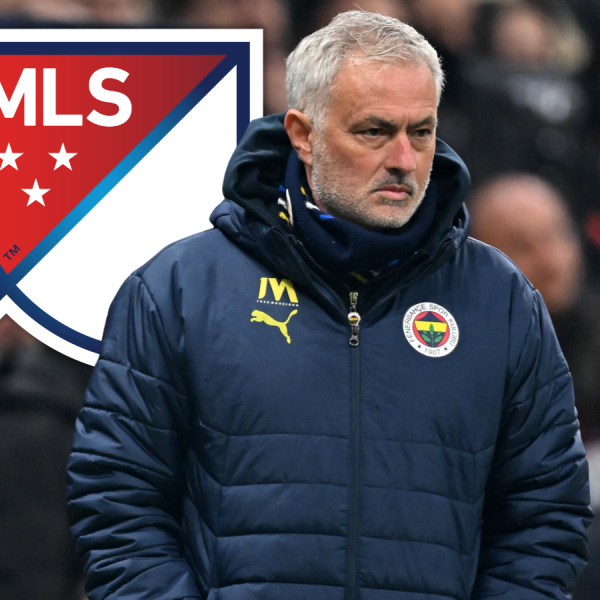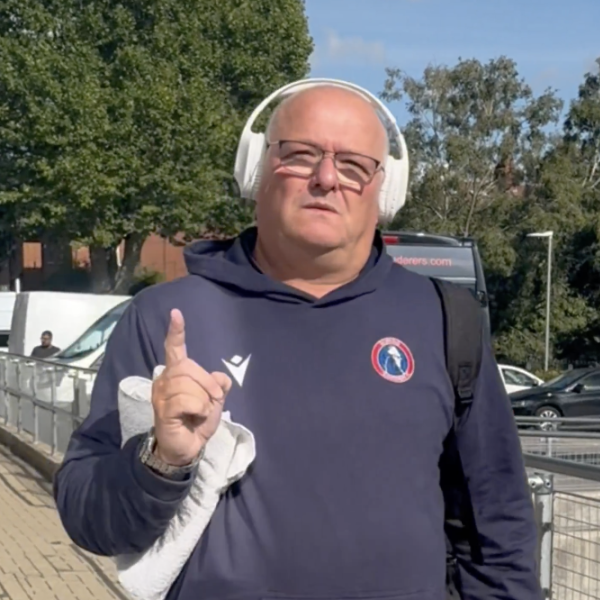Exactly 10 years ago Thursday, the Argentina national team won gold in soccer at the 2008 Beijing Olympics. It remains as Lionel Messi’s greatest triumph at the international level.
So what's happened to the players since?
The 2008 Argentina Olympics squad was absolutely loaded with talent. Youngsters like Lionel Messi, Sergio Agüero, Ángel Di María, Ezequiel Lavezzi, Éver Banega and Pablo Zabaleta were just starting their careers. They were joined by over-age player Javier Mascherano (then just 24 himself) and led by the serene Juan Román Riquelme.
At the 2008 Olympics, the Argentina national team cruised through Group A with wins over Ivory Coast (captained by a young Gervinho), Australia and Serbia. La Albiceleste needed extra time to see off the Netherlands in the quarterfinals but hit their stride in the semifinals, routing Brazil 3-0. That Brazil side, which routed Belgium 3-0 in the bronze-medal game, featured Thiago Silva, Alexandre Pato, Ramires, Rafinhia, Marcelo and the legendary Ronaldinho.
The gold medal was secured in front of 89,000 fans in Beijing when Messi played in Di María, who scored with a delightful chip in the 58th minute for a 1-0 victory over Nigeria.
(For the record, the U.S. performed well, beating Japan, drawing Netherlands and losing to Nigeria, only to go out in the group stage, finishing third with four points.)
Argentina had an absurd amount of talent at the Olympics that year. It was apparent even then that this was a golden generation of sorts. La Albiceleste also won the 2004 Olympic gold medal with the likes of Mascherano, Carlos Tevez, Willy Caballero, Javier Saviola. In 2005, Argentina won the U-20 World Cup (though it finished second to the U.S. in group play), with Messi sweeping Golden Boot and Golden Ball honors.
Eight years later since Beijing gold, however, the Argentina national team has failed to add a major trophy to its résumé.
Since winning gold in 2008, Argentina has finished runner-up at the World Cup in 2014 and in Copa America twice.
La Albiceleste have been a strong side throughout the last eight years, but hasn’t been able to come through in the biggest moments like the Olympic teams did in the 2000s.
So where are the Argentina national team players from the gold medal-winning squad today? Let’s go through each player.
Óscar Ustari, GK: 2 caps
Capped two times with the senior national team, Ustari never made it in Europe and has spent much of his career as a backup.
Ezequiel Garay, CB: 32 caps
Garay signed with Real Madrid just before the Olympics, making 25 appearances for Los Blancos. He’s carved out a decent career in Europe with Benfica, Zenit and currently Valencia and has received 32 senior level caps. He was on the pitch when Mario Götze scored the game-winning goal in the 2014 World Cup final.
Fabián Monzón, LB: 7 caps
Monzón bounced around with Betis, Nice and Lyon in Europe before returning to South America in 2013. As his seven caps show, he never made it with the senior Argentina national team.
Pablo Zabaleta, RB: 58 caps
A successful player at the club and international level, he appeared 230 times for Manchester City after a successful stint at Espanyol. Now at West Ham, the right back’s career is still going strong at age 33. Zabaleta wasn’t chosen for the 2010 or 2018 World Cups but did play in 2014.
Fernando Gago, CDM: 61 caps
With 91 appearances for Real Madrid, plus stints at AS Roma and Valencia, Gago had a good career in Europe. He’s currently back in Argentina with Boca Juniors, having rejoined the club in 2013. Among his 61 caps, he was a late substitute in the 2014 World Cup final.
Federico Fazio, CB: 10 caps
Fazio made nearly 150 appearances with Sevilla before moving to Tottenham, where he never could crack the starting lineup. Fazio is currently a regular with Roma and played briefly at this summer’s World Cup, but otherwise has failed to register much traction with the national team.
José Sosa, CM: 19 caps
With stops at Bayern Munich, Napoli, Atlético Madrid, Besiktas and AC Milan, few could say Sosa hasn’t had a strong career. However, he never made it to a World Cup. He’s currently with Trabzonspor in Turkey.
Éver Banega, CM: 65 caps
Banega was left at home for the 2010 and 2014 World Cups but played a large role in the 2018 edition. He made a great assist to Messi against Nigeria and was one of the few positives for the team in Russia. The 30-year-old midfielder has bounced around between Valencia, Sevilla, Inter Milan and back to Sevilla throughout a steady career in Europe.
Ezequiel Lavezzi, FW: 51 caps
Once a feared winger in Europe with Napoli and PSG, Lavezzi played in six matches at the 2014 World Cup, including supplying two assists. He would have had three assists but a goal from Gonzalo Higuaín was ruled out for offside in the final. Lavezzi, who moved to his current club Hebei China Fortune in 2016, was not chosen for the 2018 World Cup squad.
Juan Román Riquelme, CAM: 51 caps
One of three players over the age of 23 allowed to be chosen for the Olympics, Riquelme was one of the greatest playmakers of his generation. He was already 30 at the time of the 2008 Olympics and made just nine more caps afterword, not even making it to the 2010 World Cup, where his experience in spite of coach Diego Maradona would have been valuable. He retired in 2015.
Ángel Di María, CAM/W: 97 caps
One of the more underrated Argentine players of the last quarter century, Di María is a valuable winger who can create on his own and track back on defense. With stints at Benfica, Real Madrid, Manchester United and now with PSG, he’s racked up four league titles and a Champions League trophy. Di María played at the 2010, 2014 and 2018 World Cups, scoring in the latter two, including against eventual champion France in the Round of 16 this summer. One of Argentina’s biggest success stories from the 2008 squad.
Nicolás Pareja, CB: 1 cap
At the time of the 2008 Olympics, Pareja was an up-and-coming center back with Anderlecht and one of the over-age players chosen by coach Sergio Batista. While he had an average career overseas, moving to Espanyol, Spartak Moscow and currently with Sevilla, he played just once for the senior Argentina national team, in 2010. Though he was called up for 2018 qualifiers, he has yet to add to his list of caps.
Lautaro Acosta, FW: 2 caps
After failing to make an impact at Sevilla, going scoreless in 23 appearances, Acosta returned to Argentina where he’s made a decent career at Lanús. He earned his first senior-level cap in 2017 in a World Cup qualifier, but didn’t make it into the final World Cup squad.
Javier Mascherano, CB/CDM: 147 caps
Mascherano was 24 at the time of the 2008 Olympics, so he was named one of the over-age players. At the time a Liverpool stalwart, Mascherano later appeared more than 200 times with Barcelona before moving to China, where he currently plays for Hebei China Fortune with Lavezzi. Mascherano is one of the greatest players in the history of the Argentina national team, most often deployed as a defensive midfielder. He captained La Albiceleste at the 2010 World Cup and was a key member in both 2014 and 2018. He announced his international retirement after the 2018 World Cup.
Lionel Messi, FW: 128 caps
Do we really need to go through this guy’s accomplishments? In brief: nine LaLiga titles, four Champions League trophies and five Ballon d’Ors. While Messi is incredibly decorated at the club level, his two trophies at the international level are from the Beijing Olympics and the 2005 U-20 World Cup. He’s scored 65 goals for his national team (most all time), but will forever be compared negatively to Diego Maradona because he never won a World Cup.
Sergio Agüero, ST: 89 caps
A hero at both Atlético Madrid and Manchester City, Agüero is also third on the all-time scorer’s list for the Argentina national team. A member of the 2010 and 2014 World Cup teams, he didn’t score his first World Cup goal until 2018. Still going strong with Manchester City, Agüero’s impact with Argentina has been somewhat dampened by frequent injuries.
Diego Buonanotte, CAM: 0 caps
Buonanotte played in one match for Argentina in his career, scoring on a free kick in a group-stage match against Serbia at the 2008 Olympics. Soon after the Olympics, he crashed his father’s car. While he survived with many injuries, three of his friends died in the wreck. Since then, he’s bounced around with teams from Spain to Mexico to Greece. He’s currently playing in Chile with Universidad Católica.
Sergio Romero, GK: 94 caps
Many wonder how Argentina might have performed differently with Romero in goal instead of Willy Caballero at the 2018 World Cup. Romero was injured and couldn’t play in Russia. He did play in the 2010 and 2014 World Cups for Argentina. Oddly, Romero has had more success with the Argentina national team than club teams. His 94 caps with La Albiceleste are more than any other single club he’s played for. Currently at Manchester United, he’s made just seven appearances as David De Gea’s backup.
Nicolás Navarro, GK: 0 caps
Navarro was an injury replacement for Ustari at the Olympics but never made it into a match. He was on the U-20 team that won the 2005 World Cup. Aside from 22 appearances with Napoli, Navarro never made much of an impact in Europe, spending much of his career in Argentina and never appearing for the senior national team.
Takeaway
Argentina’s 2008 Olympic squad was an impressive assembly of talent, of this there is little doubt.
While many would suggest the national team’s failure to capitalize on this talent a failure on the part of the players, much of it was out of the control of individuals. The 2010 World Cup team was never going to win anything with Diego Maradona coaching the team. In 2014 the team came a Gonzalo Higuaín miss away from winning the world title. And Argentina didn’t lose a match in the 2015 and 2016 Copa Americas, with both losses coming on penalty kicks in the final.
From 2010 to 2018, Argentina went 9-0-7 in Copa Americas and 10-4-3 in World Cups. That’s 19 wins to four losses in six major tournaments. Not bad at all.
But because Argentina possesses likely the world’s greatest player in Lionel Messi, this is all seen as a failure because there was no major hardware taken home.
Such is the world of sports, a zero sum game in the eyes of many.







